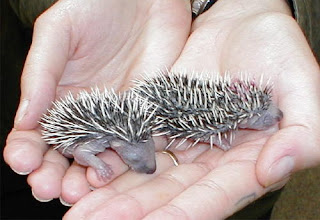At this time of year we are receiving dozens of calls regarding small hedgehogs wandering about during the day.
Hedgehogs are nocturnal mammals and, as a general rule, if they are seen out during the day, there is a problem.
 Juvenile hedgehogs are sometimes seen out desperately searching for food in order to gain enough body fat reserves to survive the cold winter months. Any that do not manage this may well die in the colder weather.
Juvenile hedgehogs are sometimes seen out desperately searching for food in order to gain enough body fat reserves to survive the cold winter months. Any that do not manage this may well die in the colder weather.We do not release hedgehogs weighing less than 600gms at this time of year, so the first question we ask people is if they can weigh the hog, giving us a better idea of the advice to give. Any that are well under this weight should be taken to your nearest wildlife hospital / rescue centre, where they can be cared for until they are heavy enough for release.
Hedgehogs do not hibernate solidly through the whole winter - in the very cold weather they go into a deeper sleep, their bodies slowing right down to conserve energy. But when we get a break in the weather, a milder spell, they will wake up again and will be seen out and about foraging for food at night, so it is not unusual to see hedgehogs around even in December or January.
If you are in any doubt as to whether or not there is a problem with a hedgehog, please telephone a hedgehog carer for advice. We are always happy to help but other organisations such as the British Hedgehog Preservation Society can give all the advice you need and they also have a list of carers all round the country.





